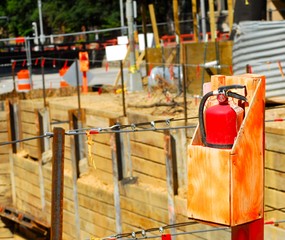
Prevent Fires On Construction Sites
All sites and buildings which are currently under construction are vulnerable to fires. These can happen regardless the simplicity or complexity of the project. Fires destroy equipment, cost money and can even delay or bring a project to a complete halt. More importantly, fires can cost lives.
This article is to consider a few vital, but simple, steps in which firms would need to take to help reduce the risk of construction fires. It will also address the risk assessors and why the need to shape their plans differently to prevent fires on construction sites which use timber frames.
Various pieces of the health and safety literature offer guidance on preventing fires on construction sites. This includes The Construction (Design and Management) Regulations 2007 and the Regulatory Reform (Fire Safety) Order 2005.
The best-regarded within the industry is The Joint Code of Practice on the Protection from Fire of Construction Sites and Buildings Undergoing Renovation. JCOP was published by the Construction Federation and Fire Protection Association. JCOP now currently has seven editions and is a comprehensive scope.
An important first step is to appoint someone who is responsible to complete the fire risk assessments. This would often be the principal or the main contractor. The person responsible must check on sites firefighting equipment and all the alarm and detection devices need to be tested to ensure they work.
Often, things like escape routes, access to fire and rescue services and temporary electric cables need to be checked. This should be done on a weekly basis. If sites are thought to be high-risk, then the principal contractor should officially appoint a fire marshal to the area. A deputy fire marshal should also be appointed and they should be permanently based on the site to implement the fire safety plans. A plan must also be created and put into place in case of an emergency.
Written emergency procedures need to be clearly displayed in locations which it is easily seen and appropriate locations. They must also be handed out tall the site employees. If a sign is used, it is important that the sign is clear and has details about the location of the escape routes, fire extinguishers, dry rise inlets and access for the emergency services. These must all be displayed.
If a fire is started deliberately, assessors would need to think about security measures such as CCTV, perimeter fencing and even hoarding. Sites that use timber frames more often have additional criteria’s which need to be added in. This is because timber frames burn faster and more completely.
